This article was medically reviewed by Lacy Windham, MD. Lacy Windham, MD, is a Board-Certified Obstetrician & Gynecologist in Cleveland, Tennessee. Dr. Windham attended medical school at the University of Tennessee Health Science Center in Memphis. Her residency was completed at Eastern Virginia Medical School in Norfolk, Virginia. She was the recipient of multiple awards during her residency training, including Most Outstanding Resident in Maternal Fetal Medicine, Most Outstanding Resident in Oncology, Most Outstanding Resident Overall, and Special Award in Minimally Invasive Surgery.
There are 11 references cited in this article, which can be found at the bottom of the page.
This article has been viewed 850,614 times.
Research shows that around 1 out of every 6 people has some form of herpes.[1] The herpes simplex viruses (HSV-1 and HSV-2) are the viruses responsible for oral and genital herpes infections, and they can cause sores, itching, painful urination, and vaginal discharge. Although doctors can treat symptoms, ease pain, and reduce the possibility of spreading the virus, herpes cannot be cured. Studies show that you can find out if you have herpes by examining high risk behaviors, recognizing the symptoms, and getting tested by a medical professional.[2]
Steps
Recognizing Herpes Symptoms
-
1Learn about the herpes viruses. There are two types of Herpes Simplex Virus (HSV), HSV-1 and HSV-2. Both can be considered genital herpes, since both types can be spread to the genitals. However, HSV-2 is far more common on the genitals. HSV-1 is the strain most common on the lips and mouth, but it can be spread through oral sex, just like HSV-2.[3] There are ways to effectively treat the symptoms of both strains when they happen, though there is no cure.
- Treatment is an important part of managing the disease. If you don't treat genital herpes, you may spread the disease to others (including your baby, if you're pregnant), experience bladder inflammation, notice rectal inflammation and in severe cases, get meningitis.
-
2Watch for symptoms approximately 2 weeks after contracting herpes. While it may take a while for the first outbreak to appear, it's usually worse than outbreaks that come later. You may not know that you've been exposed to the disease, so pay particular attention to any symptoms you start to develop. General flu symptoms are signs of the infection. These might include fever, muscle aches, decreased appetite and fatigue. See a doctor if you think you're experiencing your first herpes outbreak.[4] [5]
- It may be difficult for some people to realize they've been exposed since it can take so long for symptoms to show up. Or, the because the disease can be spread through people that don't show obvious symptoms of herpes.
Advertisement -
3Watch for redness and itching. After you've had sexual contact, pay attention to any redness or itching on your genitals or around your mouth. You may also notice tingling and hot skin at the affected area. A few days later, you may also see a rash or outbreak of herpes on your skin.[6] You should also be aware of some external factors that may contribute to the outbreak after infection. These can include:[7]
- Trauma, stress, or menses. These can release cortisol, adrenaline, and other stress hormones or dramatically change the levels of hormones in your body. Any of these may lower your body's ability to fight infection. This gives the herpes virus an opportunity to become an outbreak.
- Burning and itching before an outbreak (known as a prodrome). Reducing the itching and burning as herpes is on the verge of breaking out can speed up the outbreak. Scratching once the outbreak has happened can lead to more outbreaks and spread the virus.
- Sunlight and fever. Sunlight exposes your body to ultraviolet radiation which can irritate the skin and compromise the underlying cells, giving an opportunity for a herpes outbreak. A fever or cold compromises your immune system so your body can't suppress the infection, which leads to an outbreak.
-
4Look for blisters or on and around the genitals. You may notice small blisters (bulla or vesicles) appear approximately 6 to 48 hours after other symptoms emerge.[8] If the blisters break open and become ulcers, you'll see that they're filled with straw-colored liquid. Look for more blisters on the lips, mouth, eyes, tongue and other parts of your body. You may feel a tingling sensation in the area before a blister appears. However you may have no blisters or symptoms at all.
- On women, blisters can appear on the labia, vagina, anus, cervix, buttocks and thighs. Ulcers usually heal within 7 to 14 days.
- On men, blisters generally appear on the scrotum, penis, buttocks and thighs.
-
5Notice any painful urination. During an outbreak, urinating can be very painful. If you're having trouble emptying your bladder during an outbreak, as some women report, get medical attention.[9] Women should also look for non-specific vaginal discharge (any unnatural or unusual discharge that you're not used to). It may be clear, white, or off-white pale and may also have an odor, although this is different from woman to woman.
Getting Medical Attention and Managing Herpes
-
1Visit your doctor or clinic for tests. It's important to know that routine STD tests do not test for herpes, so you will need to specifically ask for a herpes test. If you're currently experiencing an outbreak, the doctor can conduct a swab test, where a sterile swab is dabbed gently on the sore and sent to a lab for testing. Your doctor can use the culture to test for herpes. Your initial tests might include lab and imaging tests. [12] If you are not having an outbreak, you will need a blood test. However this test is best administered 3-4 months after exposure to herpes, since it tests for antibodies (your immune system's response to infection). [13]
- Usually the diagnosis is through a Polymerase Chain Reaction (PCR) based swab test. A synthetic swab is rubbed vigorously over abnormal skin, placed in a liquid and sent to the lab. Then, using specialized laboratory techniques, the sample is amplified many times to see if the patient has herpes.
- In some cases you doctor could do a herpes type-specific antibody test. This test uses an antibody to specifically target and determine whether the infection is HSV-1 or HSV-2. 50% of infected individuals usually test positive within 3 weeks after infection. If you've been infected for more than 16 weeks, this test will almost always prove positive.
- Your doctor may also consider a PCR swab of lesion test. A sterile swab is used to vigorously swab the base of the lesion— applying enough pressure to collect epithelial cells without causing bleeding—and collect vesicular fluid. This is then sent to the lab for diagnosis.
-
2Treat your symptoms with antiviral herpes medications. If you test positive for herpes, your doctor will prescribe medications help to suppress the virus and its symptoms. Medication also reduces the risk of spreading the herpes simplex virus to others. Start treatment immediately or as soon as possible and take them according to your doctor's directions. Antiviral herpes medications include:[14]
- Acyclovir. This is a first-line drug for genital lesions or frequent lesions on the labia from herpes. It can also be used topically to treat inflammation on eyes infected with herpes. Acyclovir is considered fairly safe in pregnant and nursing women and it's also used for pediatric cases.
- Penciclovir. This is a cream that is used as a first-line medication to treat oral lesions topically.
- Valacyclovir. This is a first-line medication used to treat primary and recurrent genital herpes.
- Foscarnet. This is considered a second-line medication and is used when there is a resistance to the preferred first-line medication acyclovir. This can happen in immunocompromised individuals suffering from a systemic herpes infection.[15]
-
3Manage your herpes by taking control of your situation. Read up on herpes and learn about the virus and the infection. The more you understand about what is going on in your body, the easier it will be to cope and deal with flare-ups and breakouts. Herpes is well-documented and highly-researched. There is ongoing research in this area and new treatments may on the way.
- Your doctor will also have many recommendations and can keep you up to date on the latest medications available to you.
-
4Avoid spreading the infection. Take time to explain your condition to your sexual partners before you engage in behaviour that could transmit herpes -- this talk can be combined with a sexual health talk. Take precautionary measures to avoid further spreading the virus. These may come from lifestyle changes. For example, learn to recognise early signs of an outbreak, and consider exploring sexual practices that will not involve your outbreak site during these times. Use a condom in-between outbreaks.[16]
- If you touch a herpes sore, particularly when you are newly diagnosed, wash your hands with soap and water - your body will not possess antibodies for a few months and you could accidentally spread it to your eyes or mouth. If you have an active cold sore on your mouth, don't kiss anyone.[17]
Examining High Risk Behaviors
-
1Check for high risk factors. Realize that many people with genital herpes live without symptoms for a long period of time. Using high risk factors to determine your need for a test can help with early treatment. Factors that increase your risk of getting herpes include:
- Immunocompromised states. A compromised immune system on its own won't give you herpes, but it will make it harder for your body to protect itself and fight an infection or breakout. Illness, stress, AIDS, cancer, diabetes, and even old age can be factors may make you more vulnerable to infection by the herpes HSV-1/HSV-2 virus.
- Atopic eczema in children (also known as atopic dermatitis). Eczema is a common itchy skin disorder, but if eczema skin is infected with herpes, it can lead to a serious skin condition.
- Occupational workplace exposure. Some professions that are exposed to the virus may be at higher risk of getting herpes. For example, dental health providers are at higher risk of contracting HSV-1, resulting in an extremely painful infection of the hand.[18]
-
2Consider your sexual contact. Condoms help reduce, but do not eliminate the risk. Sexual activity places you at the highest risk of getting HSV-2 and HSV-1. But, even protected sex can spread herpes, especially during an outbreak, though it can still be spread if there are no symptoms. Herpes is spread across the moist linings (mucosal areas) of the skin, so oral, anal, penile and vaginal openings are at greatest risk for transferring the disease. When any infected area of one person comes into contact with another mucosal area of an uninfected person, the disease may be transmitted.
- Types of contact that can easily spread herpes include: kissing, oral sex, anal sex, and vaginal sex (or any combination of these where the mucosal membranes come into contact with each other).
-
3Determine your recent number of sexual partners. Since herpes can be contracted orally and through genital contact, your chances of getting the disease increase with the number of sexual partners you have. The more partners you have, the higher your risk of getting genital herpes.[19]
- However, contracting herpes does not mean someone necessarily had sex with many partners; you can get it from one person, one time. Also, many people contract HSV-1 on their mouths when they are in elementary school, or from kissing relatives when they are young.
-
4Understand your increased risk, if you're female. Women are more prone to get herpes because it's transferred more easily from men to women than from women to men.[20] For example, women have a 20.3% infection rate for HSV-2 versus a 10.6% rate among men.[21]
- According to The Center for Disease Control, 1 in 6 people in the U.S. between 14 and 49 years old has genital herpes.[22]
References
- ↑ https://www.cdc.gov/std/herpes/stdfact-herpes.htm
- ↑ https://familydoctor.org/condition/herpes/
- ↑ Agabegi, S. (2013). Step-up to medicine (3rd ed.). Philadelphia: Wolters Kluwer/Lippincott Williams & Wilkins.
- ↑ Domino, F. (n.d.). The 5-minute clinical consult standard 2015 (23rd ed.).
- ↑ Agabegi, S. (2013). Step-up to medicine (3rd ed.). Philadelphia: Wolters Kluwer/Lippincott Williams & Wilkins.
- ↑ Domino, F. (n.d.). The 5-minute clinical consult standard 2015 (23rd ed.).
- ↑ Domino, F. (n.d.). The 5-minute clinical consult standard 2015 (23rd ed.).
- ↑ Domino, F. (n.d.). The 5-minute clinical consult standard 2015 (23rd ed.).
- ↑ http://www.nlm.nih.gov/medlineplus/ency/article/000857.htm
- ↑ http://www.nlm.nih.gov/medlineplus/ency/article/000857.htm
- ↑ http://www.ncbi.nlm.nih.gov/books/NBK281/
- ↑ Domino, F. (n.d.). The 5-minute clinical consult standard 2015 (23rd ed.).
- ↑ https://www.westoverheights.com/wp-content/uploads/2014/08/Updated-Herpes-Book.pdf
- ↑ Domino, F. (n.d.). The 5-minute clinical consult standard 2015 (23rd ed.).
- ↑ Agabegi, S. (2013). Step-up to medicine (3rd ed.). Philadelphia: Wolters Kluwer/Lippincott Williams & Wilkins.
- ↑ http://www.cdc.gov/std/herpes/stdfact-herpes.htm
- ↑ http://www.plannedparenthood.org/learn/stds-hiv-safer-sex/herpes
- ↑ Domino, F. (n.d.). The 5-minute clinical consult standard 2015 (23rd ed.).
- ↑ https://www.cdc.gov/std/herpes/stdfact-herpes.htm
- ↑ http://www.uptodate.com/contents/genital-herpes-beyond-the-basics
- ↑ http://www.cdc.gov/std/herpes/stdfact-herpes-detailed.htm
- ↑ http://www.cdc.gov/std/herpes/stdfact-herpes.htm
About This Article
To know if you have herpes, watch for redness and itching around your genitals or mouth after you've had sexual contact, which could be a sign of herpes. Also, check for blisters on or around your genitals, which may form 6-48 hours after you notice other symptoms. Painful urination paired with other symptoms can also be a sign that you have herpes. If you think you have herpes, visit your doctor or a health clinic so you can get tested and receive treatment for your symptoms. To learn how to prevent herpes, scroll down.

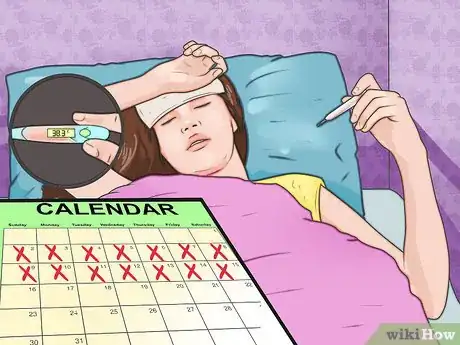
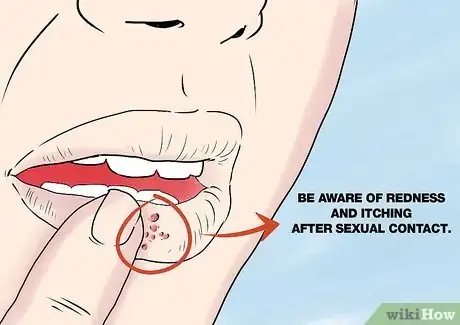
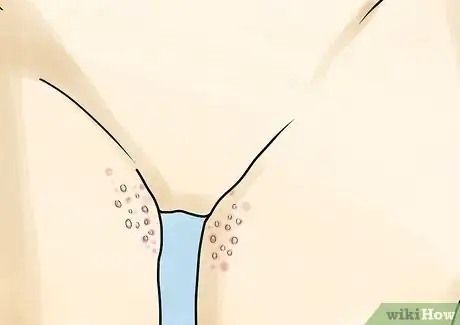


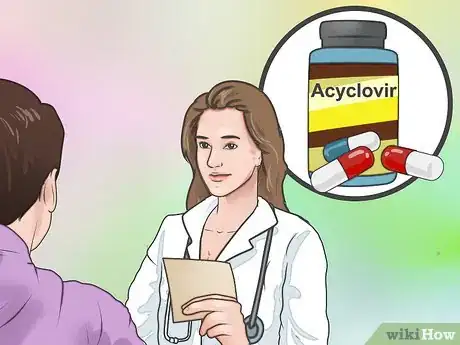
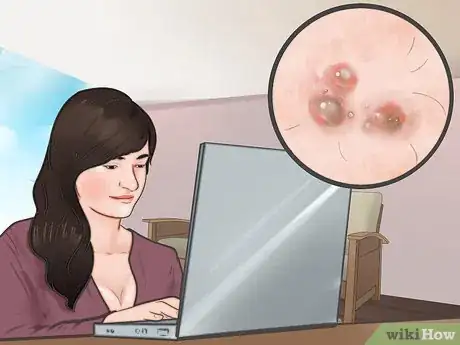
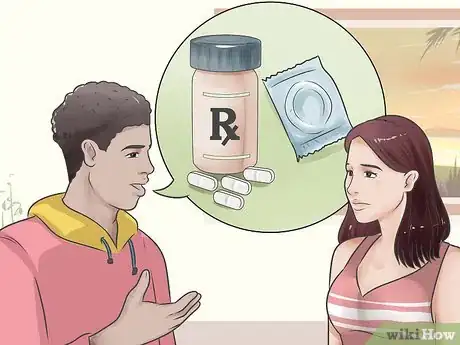
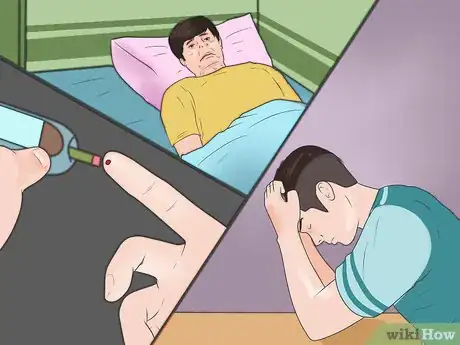






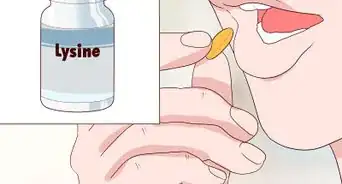

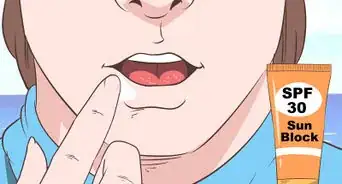
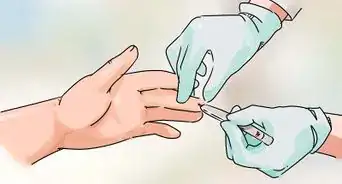





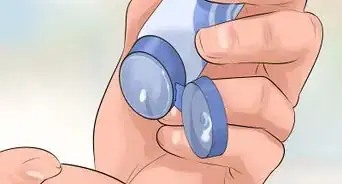
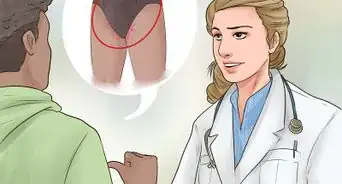












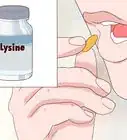



































Medical Disclaimer
The content of this article is not intended to be a substitute for professional medical advice, examination, diagnosis, or treatment. You should always contact your doctor or other qualified healthcare professional before starting, changing, or stopping any kind of health treatment.
Read More...